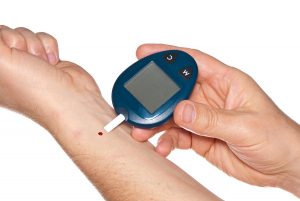A review paper of Canadian researchers showed what electronic cigarettes do to you. They can be an effective smoking cessation aid for motivated smokers who eventually want to quit. But when people continue to inhale electronic cigarettes, their use can cause heart attacks, strokes, high blood pressure and increased heart rates. With regard to the lungs electronic cigarettes can cause vaping-associated lung disease, obstructive pulmonary disease, asthma and chronic cough. A literature review showed that e-cigarettes are less harmful to the heart and the lungs than smoking combustible cigarettes.
Increased use of e-cigarettes in younger people
In Canada the 2017 Canadian Tobacco, Alcohol, and Drugs Survey, which included all ages, found that 15.4% tried e-cigarettes. But among adolescents between 15 to 19 years old 22.8% were using e-cigarettes. For young adults aged 20 to 24 the figure of e-cigarette users was 29.3%. In addition, there was a significant increase of Canadian adolescents aged 16 to 19 from 29.3% in 2017 to 37.0% in 2018. Data from the US shows similar trends. E-cigarette use among US high school students increased from 11.7% in 2017 to 27.5% in 2019.
Some facts about e-cigarettes, cigarette smoking and smoking cessation
- First, researchers noted that the smoking of e-cigarettes has a 3.62-fold risk of leading to subsequent cigarette smoking.
- Second, a UK study found that when people used e-cigarettes for smoking cessation, 80% of the e-cigarette group were still smoking e-cigarettes after 1 year. In contrast, only 9% of those who used traditional nicotine replacement therapy (Nicorette etc.) to quit smoking were still using nicotine replacement after 1 year.
- One study compared heart attack rates in a group of regular cigarette smokers and compared this to e-cigarette smokers. Cigarette smokers had a 2.72-fold higher heart attack rate than non-smokers, while e-cigarette smokers had a 1.79-fold heart attack rate compared to non-smokers.
Effect of e-cigarette use on heart and lung disease
Several studies looked at the relationship between e-cigarette use, heart attacks and strokes. There was a 1.4-fold higher incidence of coronary artery disease in e-cigarette smokers in comparison to non-smokers. The e-smokers had a 1.71-fold higher stroke incidence and 1.59-fold higher heart attack rates. In a large metaanalysis done with e-cigarette smokers, researchers noted the following facts: Electronic cigarette smokers were compared to non-smokers. Researchers noted a 2.27-fold increase of the heart attack rates in e-cigarette smokers. There was a 2-fold elevation of the systolic and diastolic blood pressure in e-cigarette smokers.
Switching from cigarette smoking to e-cigarettes
Patients who switched from tobacco smoking to chronic electronic cigarette use had a 7-fold reduction of their systolic blood pressure and a 3.65-fold reduction of their diastolic blood pressure. The researchers concluded that switching from cigarette smoking to e-cigarettes had some merit in terms of risk reduction for cardiovascular disease. But the final judgment on this is still pending. Certainly, quitting entirely from cigarette smoking is the best choice. I reported previously that e-cigarette smokers find it difficult to quit completely and if they smoke conventional cigarettes to stop that.
Effect of e-cigarettes on lungs
In addition to cardiovascular effects there is a direct effect from e-cigarette smoking on the bronchial tubes and the lungs. The vaped substances from e-cigarettes contain a lot of noxious gases that irritate the lining of the respiratory tract. This syndrome is called EVALI (electronic vaping associated lung illness). In 2019 and 2020 there was a rush of EVALI cases in the US with 2807 hospitalizations and 68 deaths. In Canada there were 19 cases of EVALI, 15 hospital admissions, and no deaths. Patients with EVALI have problems breathing, they cough and they have chest pain. Researchers suspect that vitamin E acetate and tetrahydrocannabinol are the major culprits that cause EVALI. But at this time there is no definite proof for that.
Poor quality of vaping fluid from the black market
These substances are not present in commercial e-cigarettes, but when you buy vaping fluid on the black market, it is often mixed in. Prolonged use of e-cigarettes can cause changes on spirometry, such as chronic obstructive pulmonary disease (COPD). Chronic use of e-cigarettes may cause premature onset of COPD.
Conclusion
E-cigarette use is increasing at an alarming rate among youths and persons who never smoked. The emerging evidence from researchers showed that there is a risk when you expose yourself to the smoke of e-cigarettes. There is an association of both heart disease and respiratory disease to e-cigarette smoking, but the risk is less than with exposure to regular cigarette smoke. Some researchers think that a switch from cigarette smoking to e-cigarettes could provide a viable harm reduction strategy for some smokers. But unfortunately, many continue to smoke e-cigarettes instead of quitting altogether. And in this case the risks for heart disease and lung disease remain!















